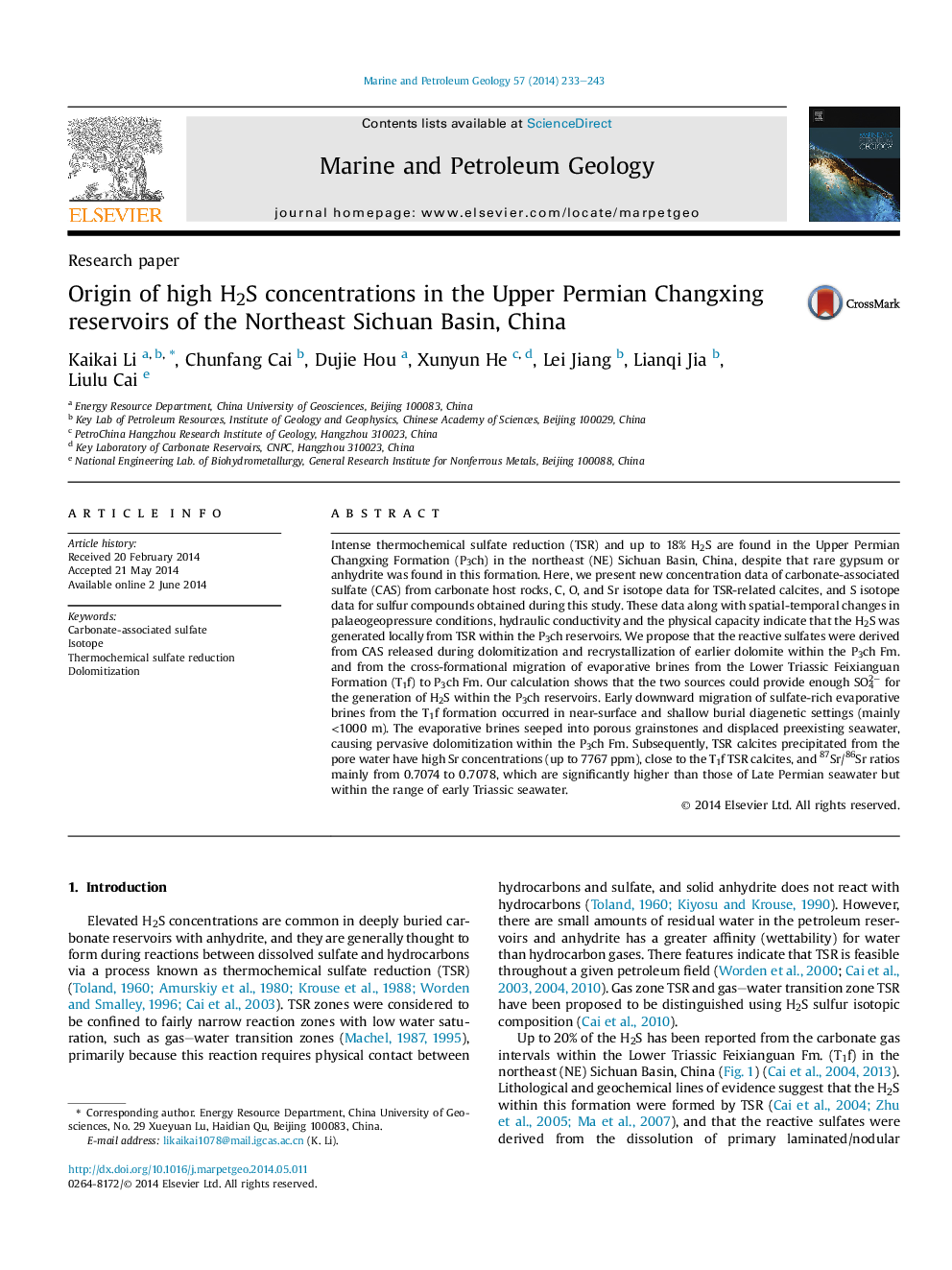| کد مقاله | کد نشریه | سال انتشار | مقاله انگلیسی | نسخه تمام متن |
|---|---|---|---|---|
| 6435345 | 1637167 | 2014 | 11 صفحه PDF | دانلود رایگان |

- CAS released via dolomitization could supply important reactive sulfate for TSR.
- The cross formational brines from the T1f Fm also supplied abundant reactive SO42â.
- The migration of the sulfate-rich brines from the T1f Fm needs to have occurred during an early stage.
- H2S in the P3ch reservoirs originated from TSR in situ rather than in the T1f Fm.
Intense thermochemical sulfate reduction (TSR) and up to 18% H2S are found in the Upper Permian Changxing Formation (P3ch) in the northeast (NE) Sichuan Basin, China, despite that rare gypsum or anhydrite was found in this formation. Here, we present new concentration data of carbonate-associated sulfate (CAS) from carbonate host rocks, C, O, and Sr isotope data for TSR-related calcites, and S isotope data for sulfur compounds obtained during this study. These data along with spatial-temporal changes in palaeogeopressure conditions, hydraulic conductivity and the physical capacity indicate that the H2S was generated locally from TSR within the P3ch reservoirs. We propose that the reactive sulfates were derived from CAS released during dolomitization and recrystallization of earlier dolomite within the P3ch Fm. and from the cross-formational migration of evaporative brines from the Lower Triassic Feixianguan Formation (T1f) to P3ch Fm. Our calculation shows that the two sources could provide enough SO42â for the generation of H2S within the P3ch reservoirs. Early downward migration of sulfate-rich evaporative brines from the T1f formation occurred in near-surface and shallow burial diagenetic settings (mainly <1000Â m). The evaporative brines seeped into porous grainstones and displaced preexisting seawater, causing pervasive dolomitization within the P3ch Fm. Subsequently, TSR calcites precipitated from the pore water have high Sr concentrations (up to 7767Â ppm), close to the T1f TSR calcites, and 87Sr/86Sr ratios mainly from 0.7074 to 0.7078, which are significantly higher than those of Late Permian seawater but within the range of early Triassic seawater.
Journal: Marine and Petroleum Geology - Volume 57, November 2014, Pages 233-243